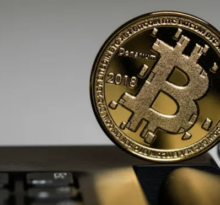The dollar begins a heavy week of data with a slight dip.

The dollar edged lower on Monday ahead of key U.S. durable goods orders and inflation data, offering insights into the Federal Reserve’s potential interest rate cuts.
The dollar index, which gauges the greenback against a basket of currencies, edged down 0.2% to 103.78. However, the U.S. currency gained 0.1% against the Japanese yen, reaching 150.71.
In cryptocurrencies, ether surged 8% to $3,177, while bitcoin climbed 6.89% to $54,506.
U.S. durable goods data is scheduled for release on Tuesday, while January’s U.S. personal consumption expenditures price index, the Fed‚s preferred inflation measure, will be out on Thursday.
Recently, the market has tempered its expectations regarding the scale and timing of potential Fed rate cuts, reflecting the ongoing strength of the U.S. economy.
Markets have largely dismissed the possibility of a rate cut at the Fed’s March meeting and have shifted expectations for a potential cut from May to June, according to CME’s FedWatch Tool. This adjustment follows robust U.S. consumer and producer price data.
This week, inflation figures are due in the euro zone, Japan, and Australia, along with a rate decision from the Reserve Bank of New Zealand (RBNZ) and China PMI surveys.
“The market is a bit cautious and the key driver for dollar/yen is U.S. yields,” commented Marc Chandler, chief market strategist at Bannockburn Global Forex in New
“In Q4 of last year, the market got very aggressive about the Fed easing and in the first half of Q1, the market adjusted, interest rates rose and the dollar rose. That adjustment is over, and I think we’ll begin seeing weak economic data beginning with tomorrow’s durable goods orders.”
Japan’s nationwide consumer prices are also scheduled for release on Tuesday, with forecasts anticipating a slowdown in core inflation to an annual rate of 1.8% in January, marking the lowest since March 2022.
The statement suggests that the Bank of Japan’s (BOJ) intentions to terminate negative interest rates in the near future might face complications, consequently maintaining pressure on the yen.
The euro, showing gains against the dollar in eight out of the last nine trading sessions, was recently up 0.3% at $1.0852.
European Central Bank (ECB) officials have emphasized their attention to inflation within the euro zone, with a particular focus on the service sector and wage growth.
ECB President Christine Lagarde informed European lawmakers in Strasbourg that wage growth remains robust across the euro zone. However, firms might be offsetting some of this increase through reduced profit margins rather than implementing price hikes.
One significant factor contributing to the euro’s strength has been the diminishing disparity in expectations between where traders anticipate U.S. and euro zone interest rates will end the year.
Just two weeks ago, investors were projecting the Fed to reduce rates by approximately 80 basis points this year, contrasting with around 100 bps from the ECB. However, by Monday, that discrepancy had nearly vanished.
Risk Warning: CFDs are complex instruments and come with a high risk of losing money rapidly due to leverage. 80.38% of retail investor accounts lose money when trading CFDs with this provider. You should consider whether you understand how CFDs work and whether you can afford to take the high risk of losing your money.






